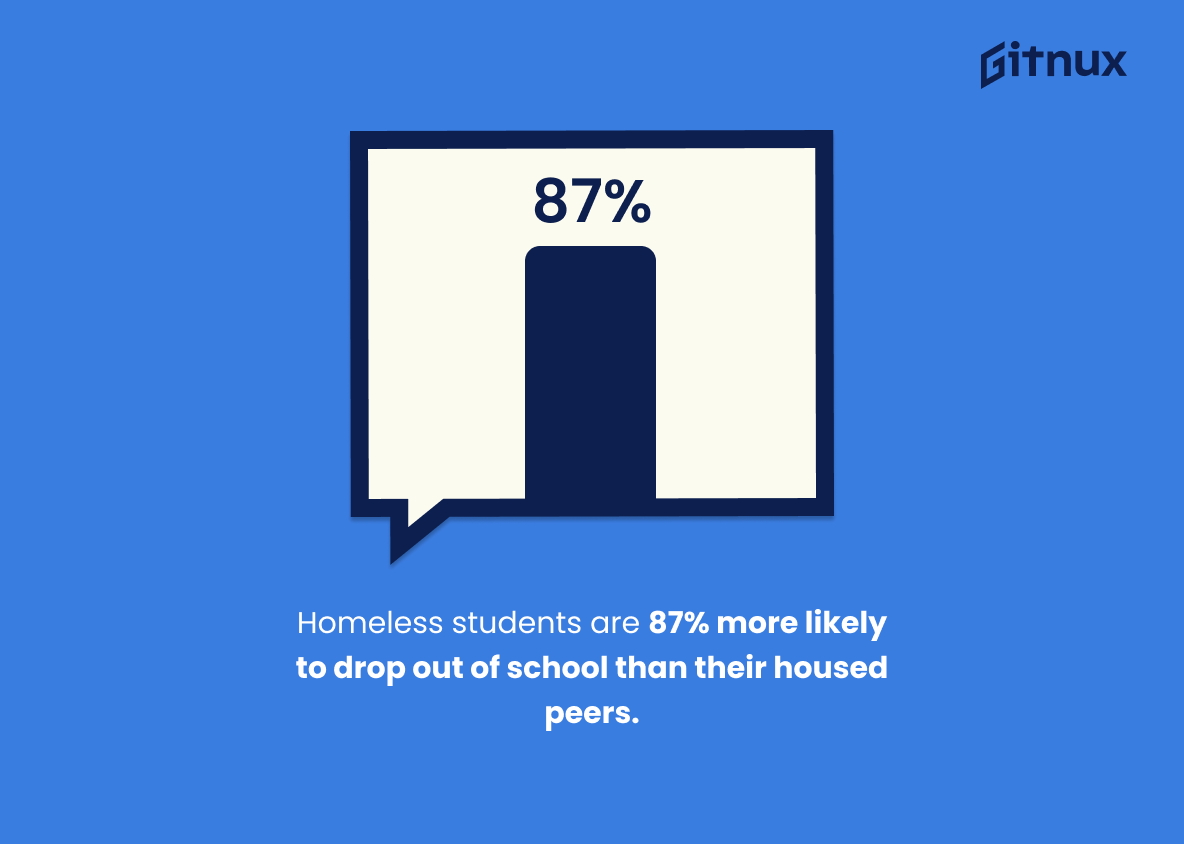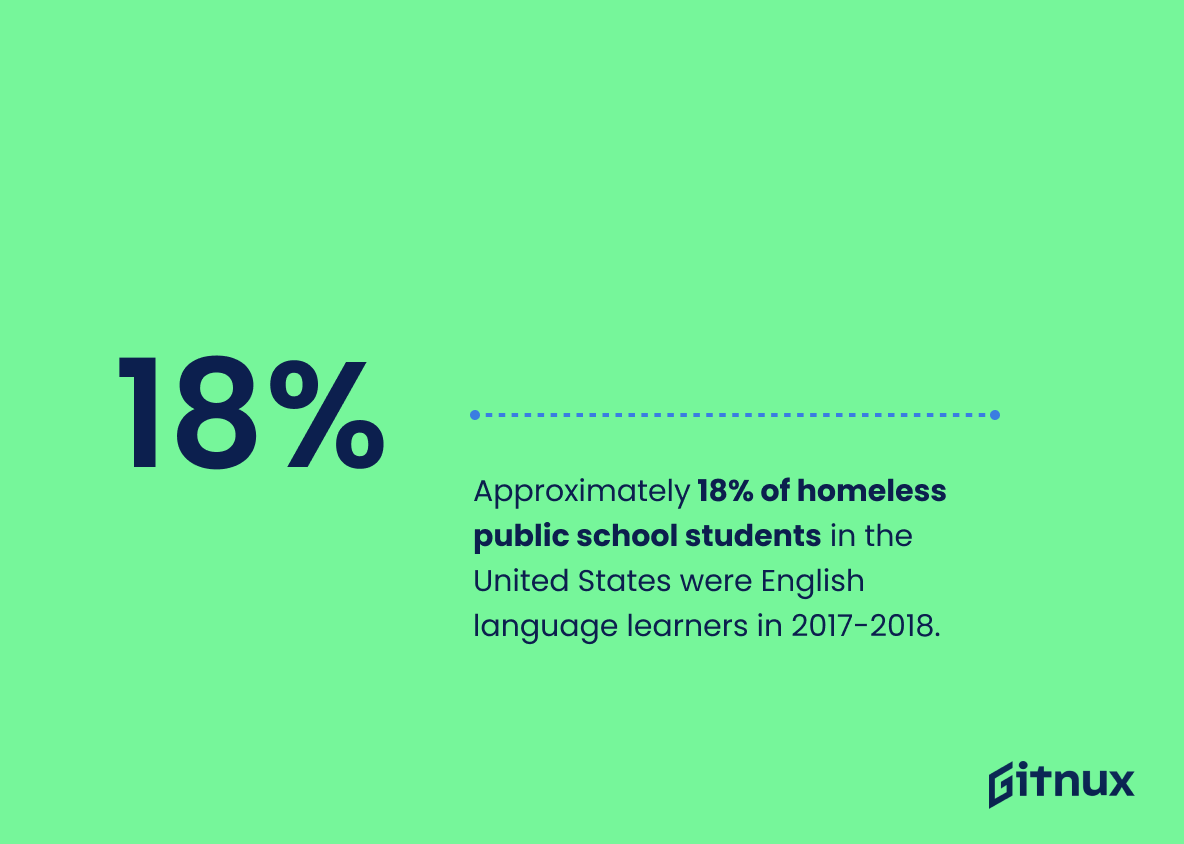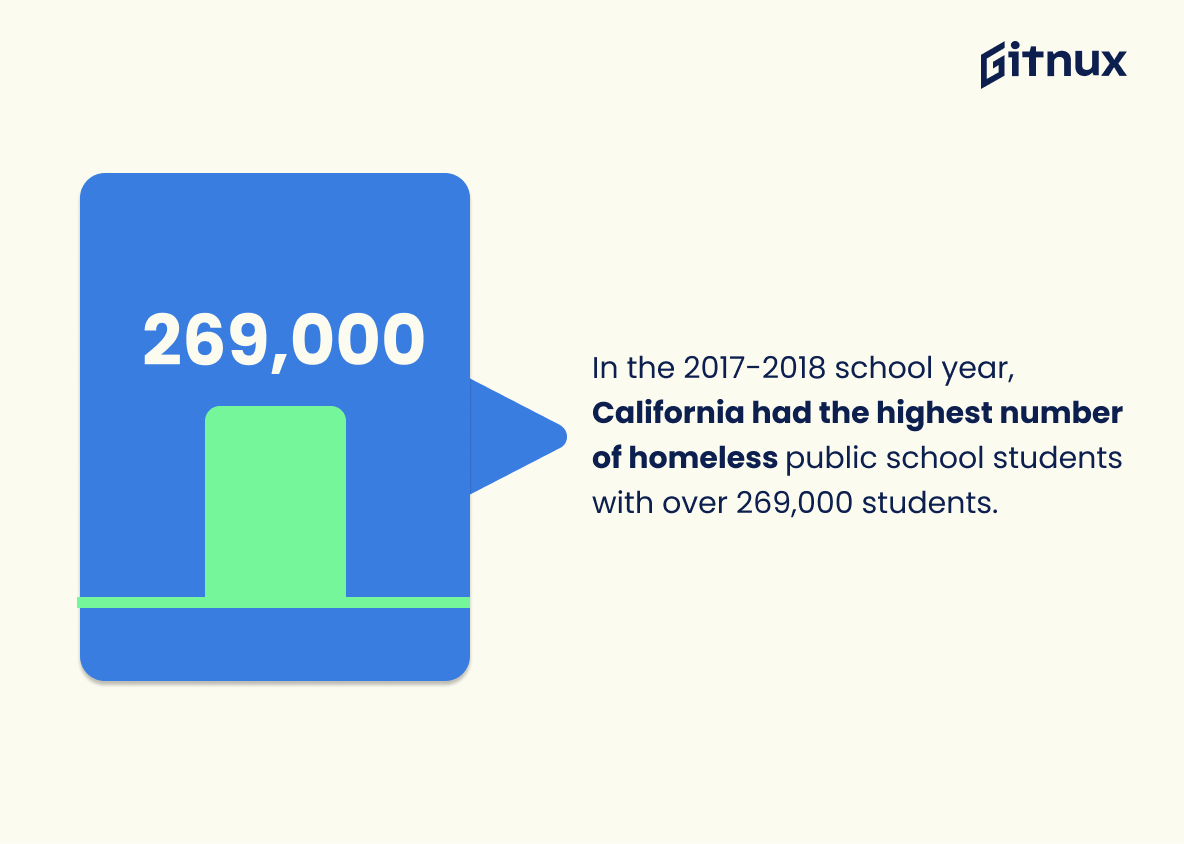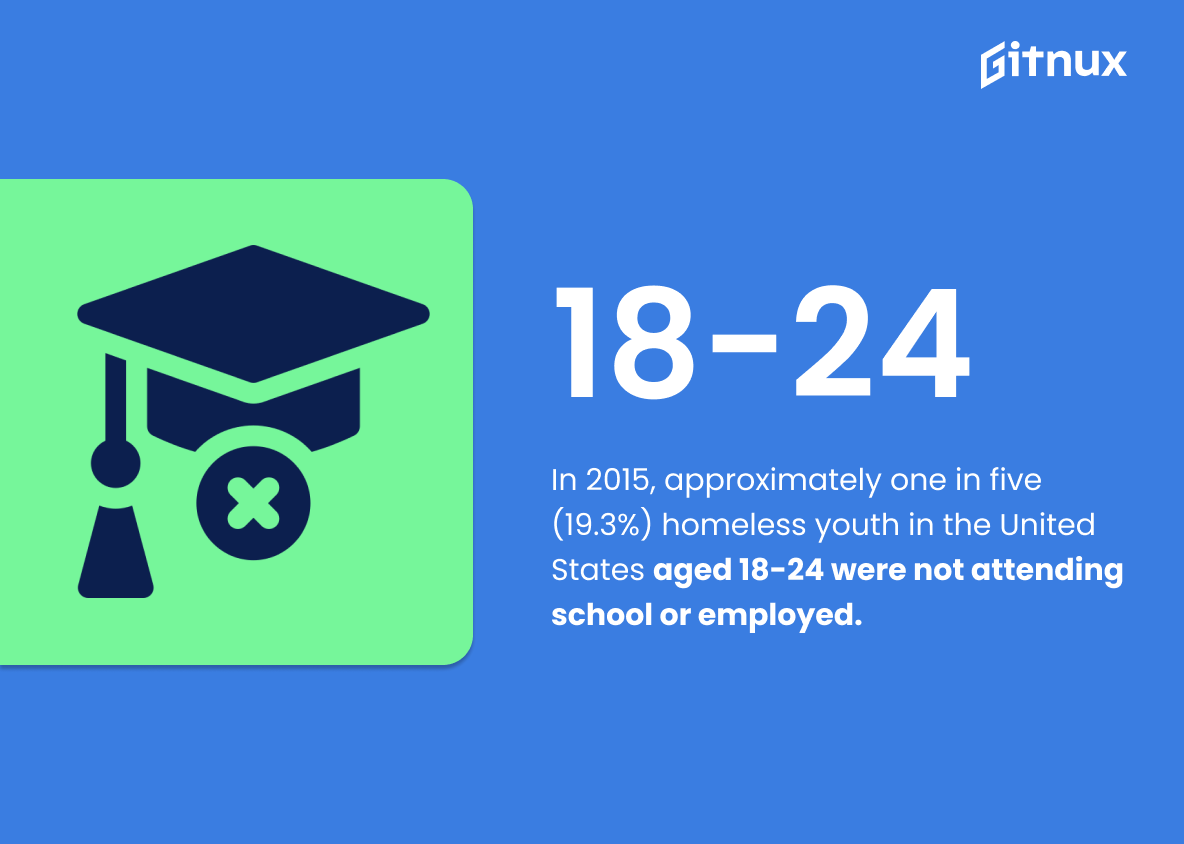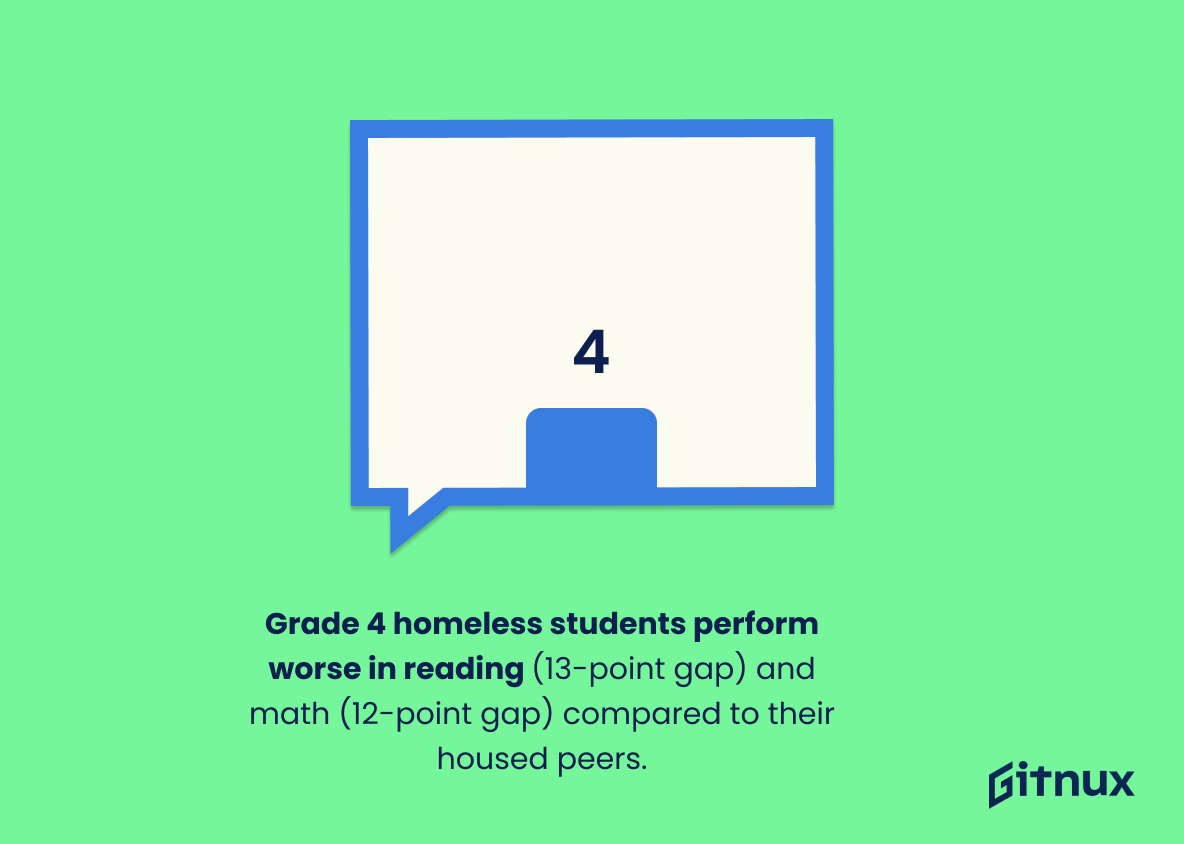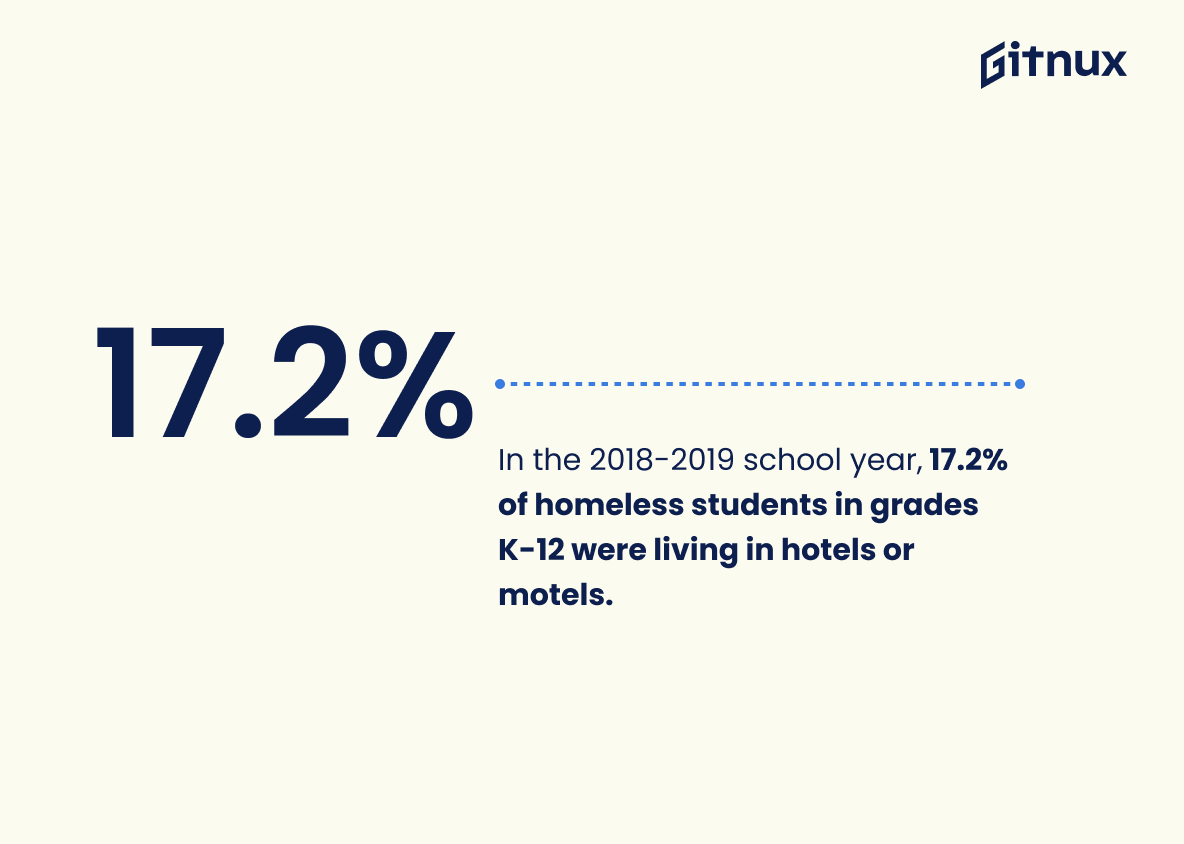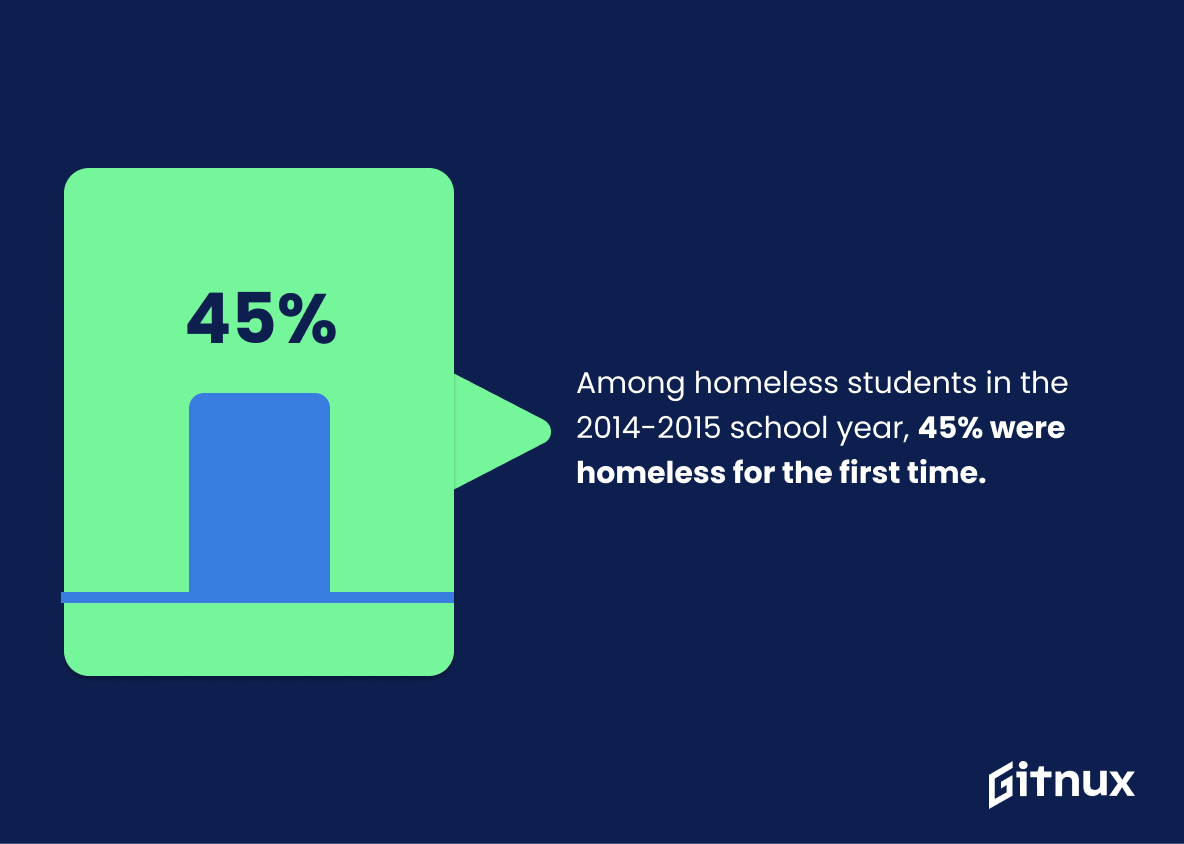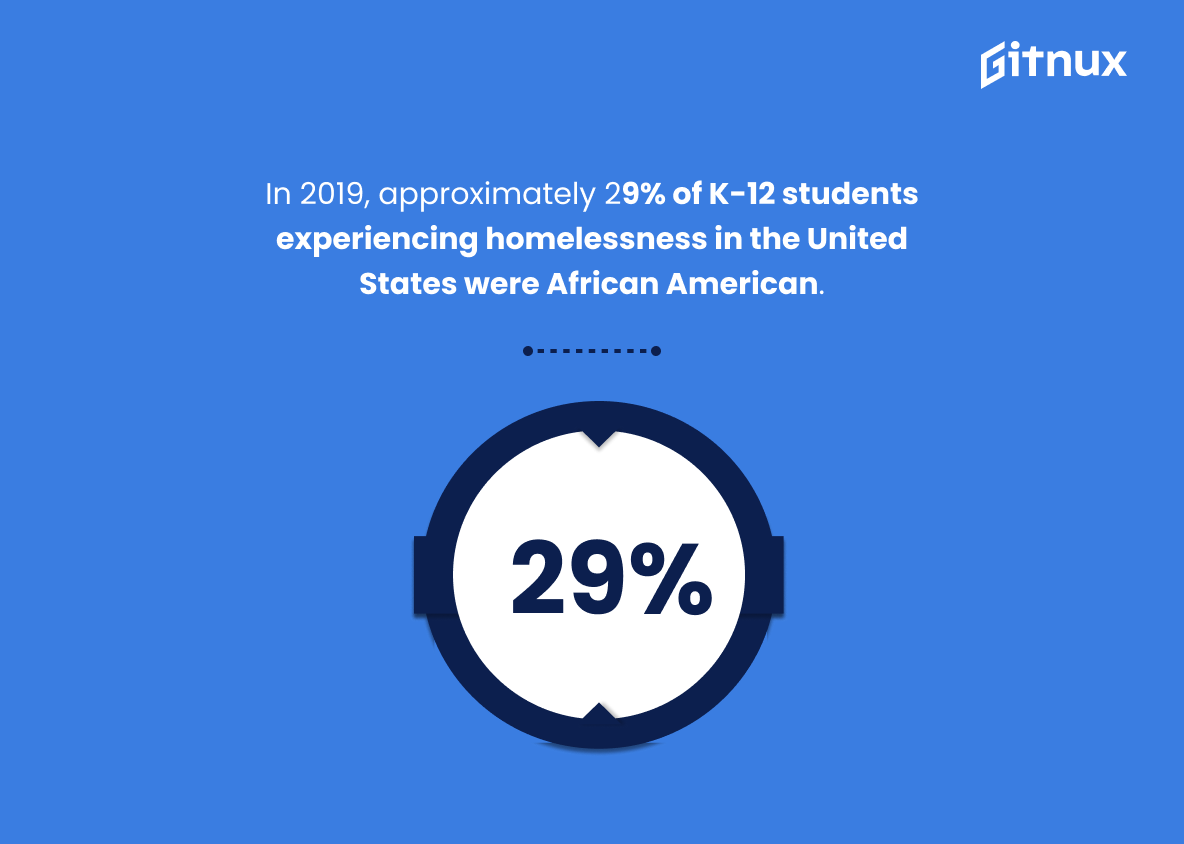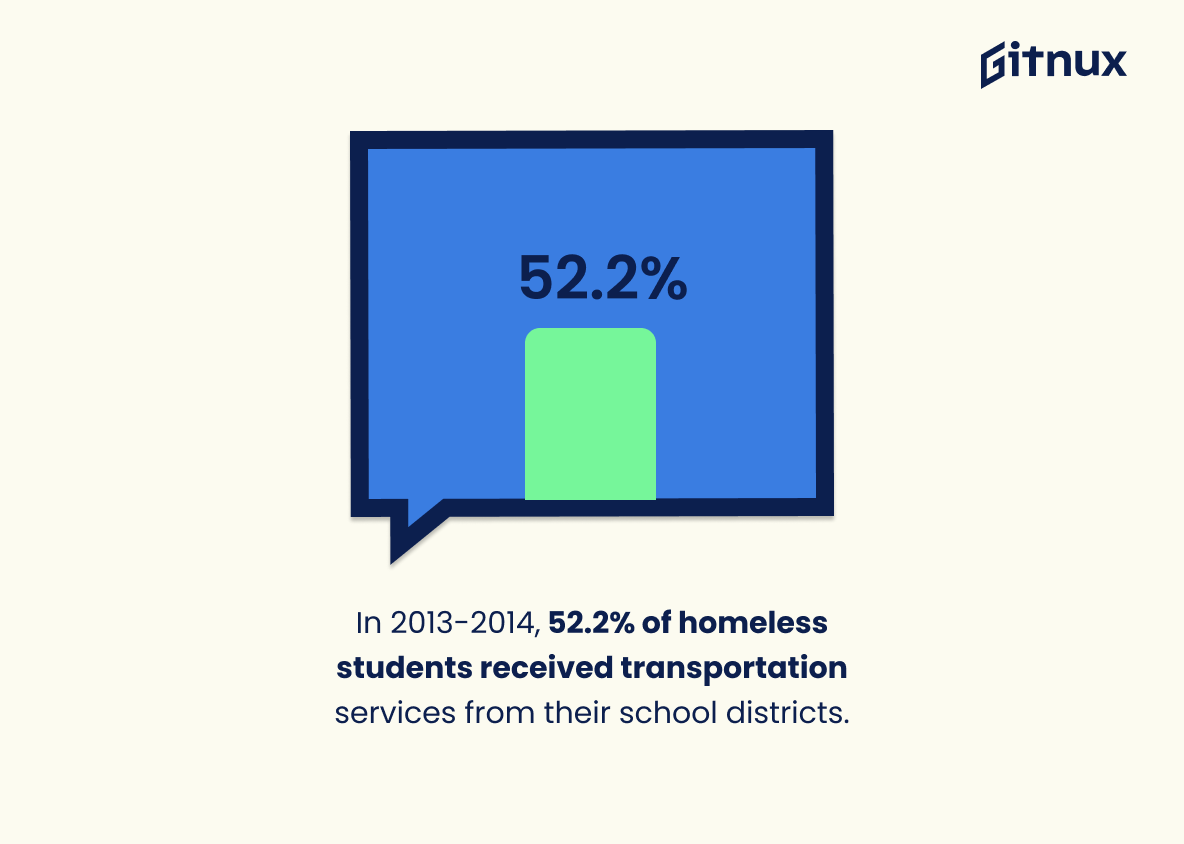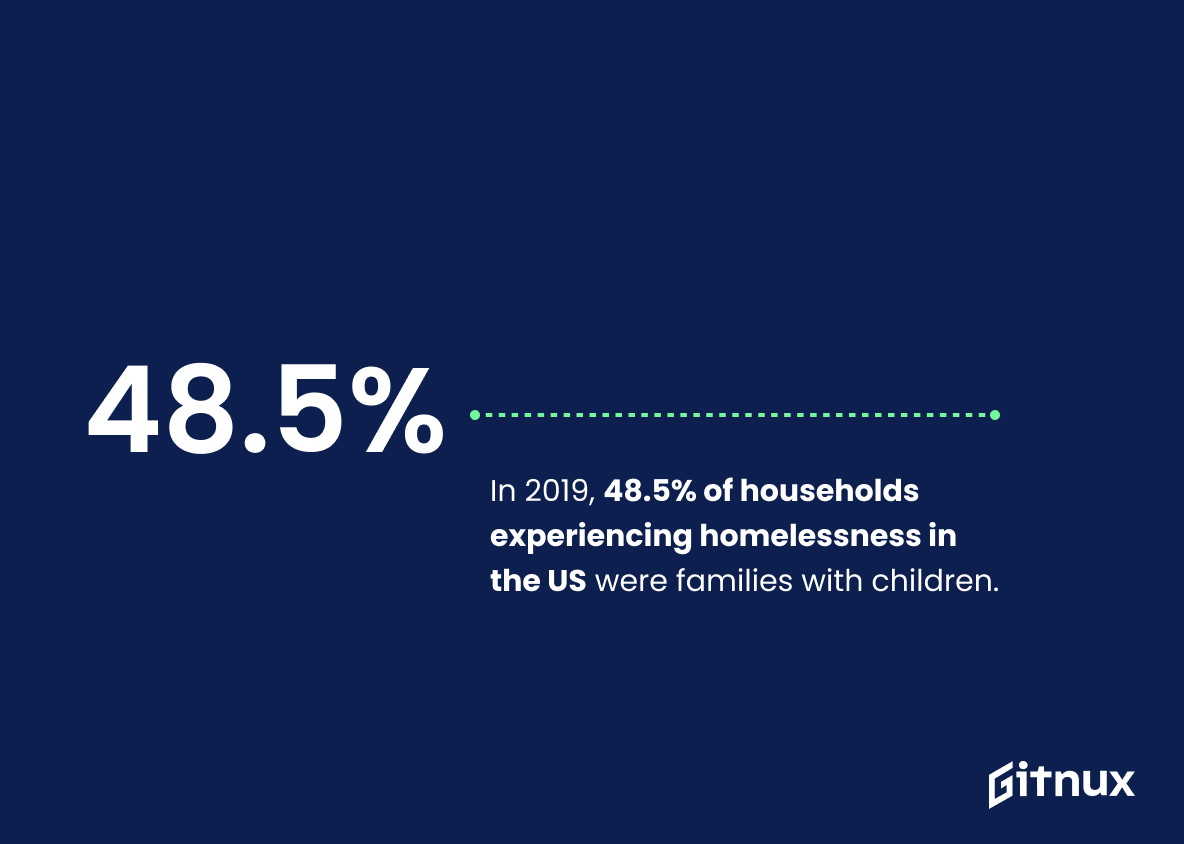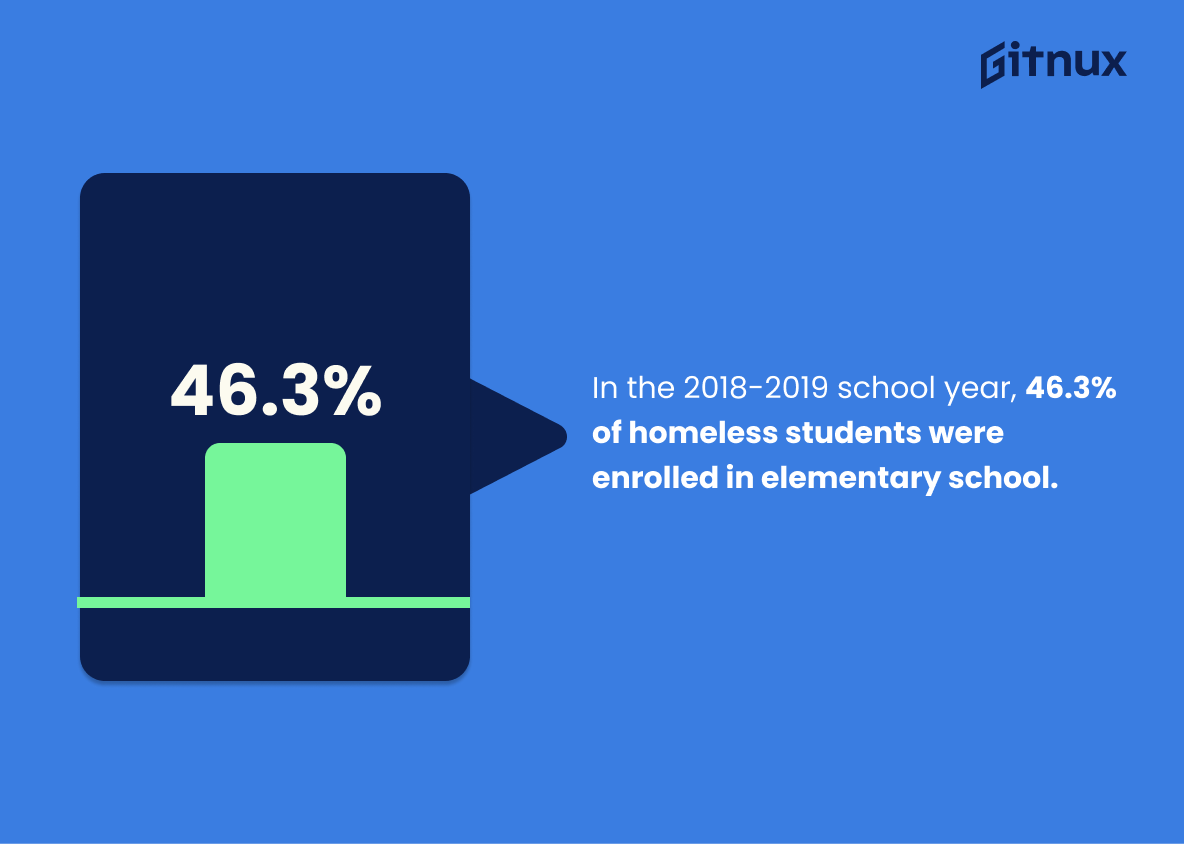Homelessness is a growing problem in the United States, and it has an especially large impact on students. According to data from various sources, there were approximately 1.5 million homeless students enrolled in public schools during the 2018-2019 school year. Of these students, 8.6% were unsheltered – living in cars, parks, or on the street – while 17.2% lived in hotels or motels. Additionally, 46.3% of them attended elementary school that same year.
Unfortunately, for many of these children experiencing homelessness, their educational outcomes are significantly worse than those of their housed peers. They have lower graduation rates (64%), higher dropout rates (87%), and poorer academic performance across all grade levels compared to non-homeless youth. English language learners make up 18% of this group, which can further impede their learning.
Additionally, 45% of homeless students experienced homelessness for the first time during the 2014–2015 school year. It is worth noting that 29% of these students are African American. Furthermore, 53% missed school due to health problems, such as lack of access to healthcare services. Moreover, 26% transferred schools at least once between 2016–2017. During the 2013–2014 school year, 52.2% of homeless students received transportation services provided by their districts. Lastly, according to 2019 estimates, 48.5% of households with children experience temporary housing or homelessness.
It is clear that homelessness poses significant challenges for students, affecting their educational opportunities and overall well-being. Addressing this issue is crucial to ensure equal access to education and support for all students, regardless of their housing situations.
This statistic post will explore some statistics about homeless student populations throughout America’s public schools system so we can better understand how this issue affects our nation’s education system today
Homeless Students Statistics Overview
In 2015-2016, the graduation rate for homeless students in the United States was 64%.
This statistic is a stark reminder of the educational disparities between homeless students and their peers. It highlights the need for increased support and resources for homeless students in order to ensure that they have the same opportunities to succeed as their peers. It is a call to action for educators, policy makers, and communities to come together to ensure that homeless students have the same access to educational opportunities as their peers.
Homeless students are 87% more likely to drop out of school than their housed peers.
This statistic is a stark reminder of the immense challenges homeless students face in their pursuit of an education. It highlights the need for greater support and resources to ensure that these students have the same opportunities as their housed peers to succeed in school.
Approximately 18% of homeless public school students in the United States were English language learners in 2017-2018.
This statistic is a stark reminder of the disproportionate impact homelessness has on English language learners. It highlights the need for increased resources and support for these students, who are already facing a number of challenges due to their language barrier. It also serves as a call to action for educators and policy makers to ensure that these students have access to the same educational opportunities as their peers.
In the 2017-2018 school year, California had the highest number of homeless public school students with over 269,000 students.
This statistic is a stark reminder of the reality of homelessness in California. It highlights the immense challenge of providing educational opportunities to the thousands of students who lack a stable home. It is a call to action to ensure that these students have access to the resources they need to succeed in school and in life.
Children experiencing homelessness are more than twice as likely to have learning disabilities than their housed peers.
This statistic is a stark reminder of the immense challenges that homeless students face in their educational journey. It highlights the need for increased support and resources to ensure that these students have access to the same educational opportunities as their housed peers. It also serves as a call to action for educators, policy makers, and community members to come together to create a more equitable and inclusive learning environment for all students.
In 2015, approximately one in five (19.3%) homeless youth in the United States aged 18-24 were not attending school or employed.
This statistic is a stark reminder of the reality that many homeless youth in the United States are facing: a lack of access to education and employment opportunities. It highlights the need for more resources and support for these young people, so that they can have the same opportunities as their peers. It also serves as a call to action for those who are in a position to help, to ensure that these young people are given the chance to succeed.
Homeless students from grade 4 perform worse in both reading and math than their housed counterparts, with a 13-point gap in reading and a 12-point gap in math achievement.
This statistic is a stark reminder of the educational disparities between homeless and housed students. It highlights the need for greater access to resources and support for homeless students in order to close the achievement gap. It also serves as a call to action for educators, policy makers, and other stakeholders to take steps to ensure that homeless students have the same opportunities to succeed as their housed peers.
In the 2018-2019 school year, 17.2% of homeless students in grades K-12 were living in hotels or motels.
This statistic is a stark reminder of the reality that many homeless students face. It highlights the fact that a significant portion of homeless students are living in hotels or motels, which can be a difficult and unstable environment for children to grow up in. This statistic serves as a call to action to ensure that homeless students have access to safe and secure housing.
Among homeless students in the 2014-2015 school year, 45% were homeless for the first time.
This statistic is a telling indication of the growing prevalence of homelessness among students. It highlights the fact that homelessness is becoming an increasingly common issue for students, with nearly half of those experiencing homelessness in the 2014-2015 school year being homeless for the first time. This statistic serves as a reminder that homelessness is a growing problem that needs to be addressed.
In 2019, approximately 29% of K-12 students experiencing homelessness in the United States were African American.
This statistic is a stark reminder of the disproportionate impact of homelessness on African American students in the United States. It highlights the need for greater attention to be paid to the unique challenges faced by this population, and the need for targeted interventions to ensure that all students have access to the resources they need to succeed.
In the 2018-2019 school year, 20.2% of homeless students in the U.S. were enrolled in preschool.
This statistic is a stark reminder of the reality of homelessness in the United States. It highlights the fact that even the youngest members of our society are not immune to the struggles of homelessness. It is a reminder that we must do more to ensure that all children have access to the resources they need to succeed in school and in life.
In the 2013-2014 school year, an estimated 52.2% of homeless children and youth were provided with transportation services by their school districts.
This statistic is a testament to the dedication of school districts to ensure that homeless children and youth have access to the same educational opportunities as their peers. By providing transportation services, these districts are helping to bridge the gap between homeless students and their peers, allowing them to attend school and receive the education they need to succeed.
In 2019, nearly half (48.5%) of households living in temporary housing and experiencing homelessness in the United States were families with children.
This statistic serves as a stark reminder of the reality of homelessness in the United States, particularly for families with children. It highlights the fact that homelessness is not just an individual issue, but a family issue, and that the effects of homelessness can be felt by multiple generations. This statistic is especially relevant to a blog post about Homeless Students Statistics, as it emphasizes the need for support and resources for homeless students and their families.
In the 2018-2019 school year, 46.3% of homeless students were enrolled in elementary school.
This statistic is a stark reminder of the reality that homeless students are disproportionately represented in elementary school. It highlights the need for increased resources and support for homeless students, particularly those in elementary school, to ensure they have the same opportunities as their peers.
Conclusion
The statistics presented in this blog post demonstrate the prevalence of homelessness among students in public schools across the United States. From these numbers, we can see that homeless students are more likely to drop out of school and have lower academic achievement than their housed peers. We also learn that many homeless children lack access to basic services such as transportation and health care, which further exacerbates their educational challenges. These findings underscore the need for increased resources and support for homeless youth so they can succeed academically despite difficult circumstances.
References
0. – https://www.nces.ed.gov
1. – https://www.www.childtrends.org
2. – https://www.www.ncjfcj.org
3. – https://www.www.publicschoolreview.com
4. – https://www.www2.ed.gov
5. – https://www.eddataexpress.ed.gov
6. – https://www.nche.ed.gov
7. – https://www.www.hudexchange.info

